This guide was written by Kate Holloway (Preservation Manager), Marika Kocsis (Senior Conservator, Paper) and Leah Williams (Preservation Technician)

It’s bushfire season again.
The impact on human and animal life and the environment can be catastrophic.
The grief at losing cherished personal items can also be significant.
How can you reduce the risk of loss of treasured objects before a disaster and what sort of salvage strategies can you use to recover them?
If you live in an area where bushfire is an all too real possibility, it’s never too soon to start planning for their preservation.
Preparation
Prepare an inventory and take photographs of your most precious items. Store this information in a safe location, preferably off your property. Taking photos can help with insurance claims.
Consider relocating these items away from your home during the bushfire season.
You could also consider making copies of important documents – give originals to friends or relatives and keep duplicates in an easily accessible location, or make digital copies and store in the cloud.
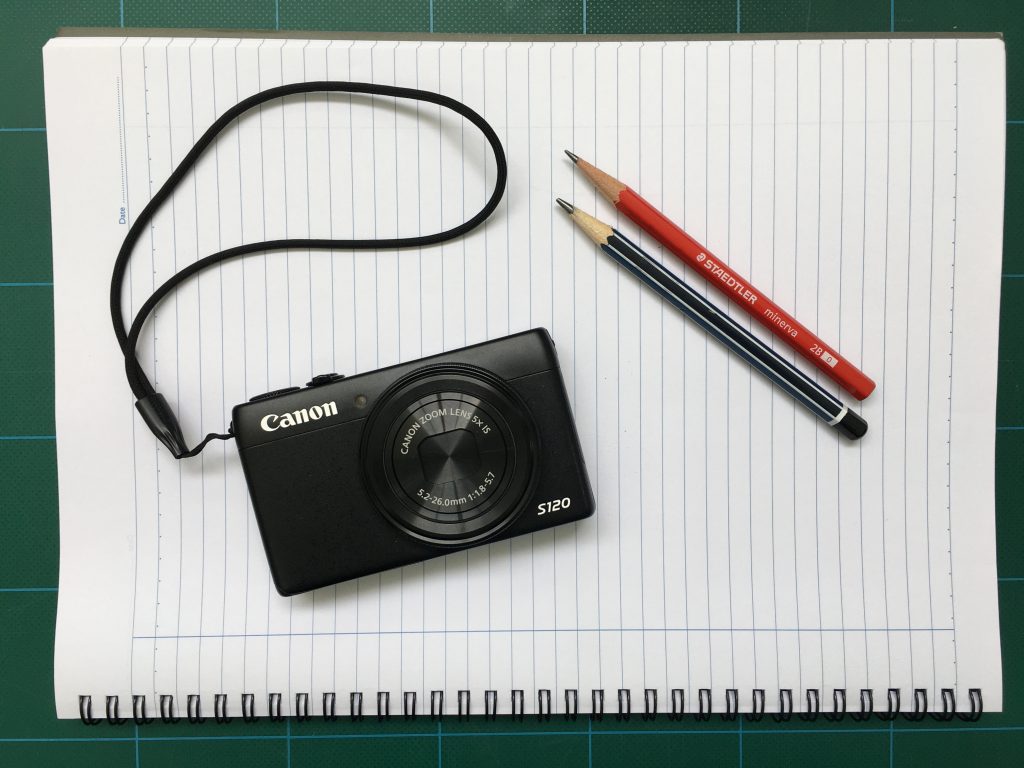
If you keep them with you, identify your priority items – what will you take with you when evacuating (think about size and weight as well – you don’t want to be trying to squeeze a large painting down a staircase and through a narrow doorway if a bushfire is threatening).
Identify the best storage locations for this material within your house – away from external walls, within a well-insulated room, on concrete floors, under a reinforced ceiling, in a room with few windows. Bathrooms and laundries are good examples.
Consider a fire proof safe or similar storage containers for precious items – something that’s not too heavy to move. However, there is no guarantee that these items are any more effectively protected if a fire is extremely hot and ferocious.
Aim to protect your valuable items from heat, smoke and water damage. Enclose them in well-sealed containers, cover them in woollen or fire blankets. Sturdy plastic tubs are effective – do not overfill as they can quickly become too heavy to transport. Do not use cardboard boxes.

Prepare a simple response kit that is easily and quickly accessible – store essential tools and equipment in a sealable container. It could include nitrile gloves, face masks and eye protection, as well as other useful tools, such as paper towel, cloth towels, aprons, sponges, brushes, notepaper and plastic bags.

Response and Recovery
If your house is damaged by fire, it is possible that your belongings have also been damaged. Despite all of your precautionary planning, some valuables may have been seriously damaged or destroyed. However, you might be surprised at what has survived and what is salvageable.
Personal safety is the highest priority when re-entering damaged buildings. Never try to retrieve any belongings if it is unsafe to do so.
Wear protective clothing and shoes, including nitrile gloves, face mask and eye protection.
Note: Think carefully before carrying out any salvage processes on insured items. Seek advice first from your insurer.
If your precious items have significant monetary value, don’t attempt any salvage treatments without conservation advice (link included at the end of this document).
If you are unsure or in doubt, don’t touch it! Pack it carefully, take some photos and seek conservation advice (as above).
Handle damaged items as little as possible (apart from relocating to safety) – they will be fragile and vulnerable to more damage.
Lift objects carefully and with appropriate support. Try not to touch the surface if it is blistered, distorted or flaking.
Place items in protective boxes or containers to keep them safe until you can obtain conservation advice regarding salvage treatments or start your cleaning process. Plastic tubs are inexpensive and transportable (don’t overfill them). Do not use cardboard boxes.
Dry material:
Items that are covered with soot or ash can be gently brushed down to remove debris. Soot can be greasy and heavy rubbing can push it deeper into an object’s surface. Use a soft brush, sweeping any debris away from you.
If material is robust, a domestic vacuum cleaner can be used, fitted with an appropriate filter (such as a HEPA filter) and small brush attachment, on low speed to gently remove debris. Use careful, light strokes, sweeping away from you.

Remember that damaged paper is particularly vulnerable and any suction can cause it to tear or detach.
To further protect items, a piece of gauze (alternatives: a pair of stockings or light fly screen) can be fitted over the nozzle using a rubber band. Gently sweep any surface debris into the vacuum’s nozzle with a soft brush.
Work outside or in a well ventilated, clean and dry area.
Do not use water to remove soot, ash or dirt. It can be driven further into the surface of an item.
Instead, a smoke sponge (readily available – see equipment list) can be used to carefully and gently remove layers of dust and soot. Change the sponge regularly.
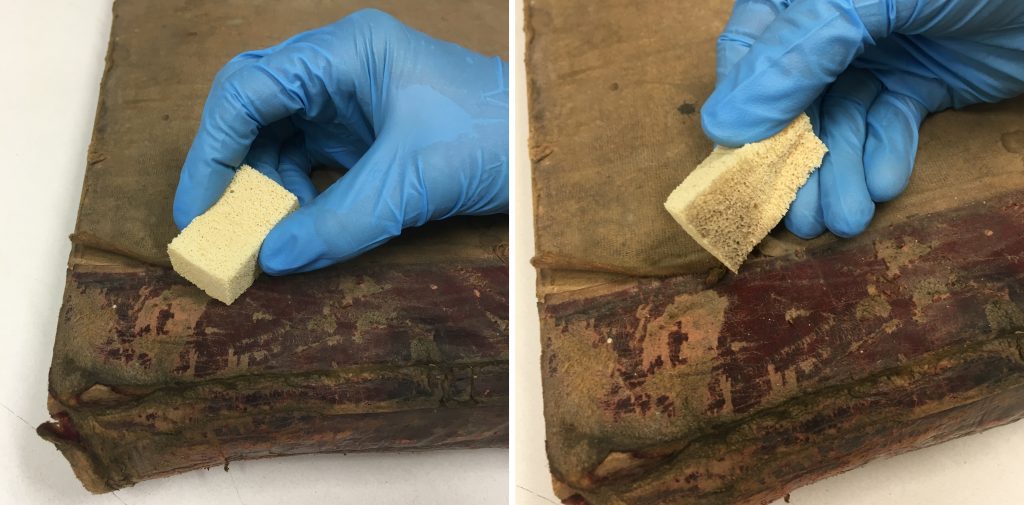
Books may appear charred on the outside but may be clean and intact on the inside. Brush or vacuum debris from the outside before opening the book.
Dirty (but dry) metals and ceramics can be carefully rinsed. However, there are risks in doing this without conservation advice –metals can rust if left wet and unglazed ceramics are particularly vulnerable.
Dry wooden items can be gently brushed down and wiped down with a soft cloth.
Wet material:
Objects can become significantly weaker and fragile when wet, so handle with great care. Consider also the possibility of mould growth, especially in warm and humid conditions. Always wear gloves and a mask when handling wet material.
Wet books can be air dried, either in a warm and dry location or in front of a gently operating electric fan. Gently press excess water from a book with a clean towel. However, if your books have shiny, glossy pages, do not press – the pages can permanently stick together.
Stand books upright on a clean and dry surface – a clean sheet on the ground will suffice. Allow the pages to fan out to encourage ventilation.
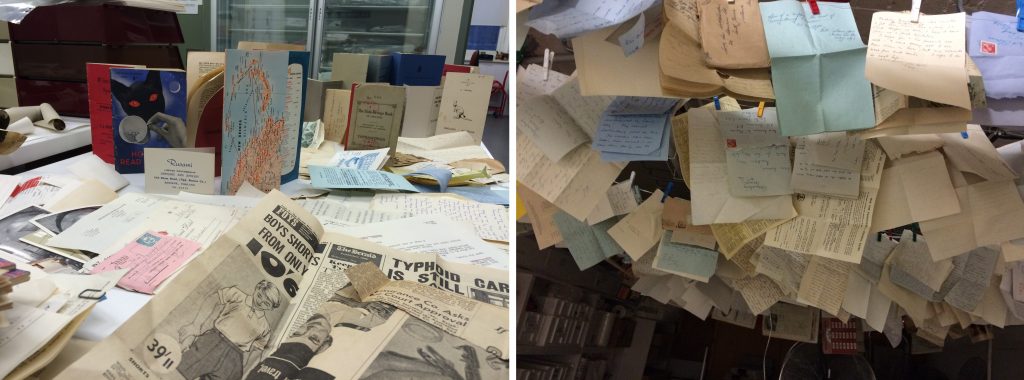
Loose, damp (not sodden) documents or papers can be pegged to a clothes line (or makeshift equivalent – think string or fishing line) in a clean and warm place, but out of direct sunlight.
Do not store any wet material in an enclosed container. Adequate ventilation is essential to prevent mould growth.
If items do show evidence of mould damage, place them in a warm and dry location. Once completely dry, they can be carefully cleaned (gentle vacuum or brush). Keep in mind that wet paper can distort and weaken upon drying. Handle with care and provide adequate support.
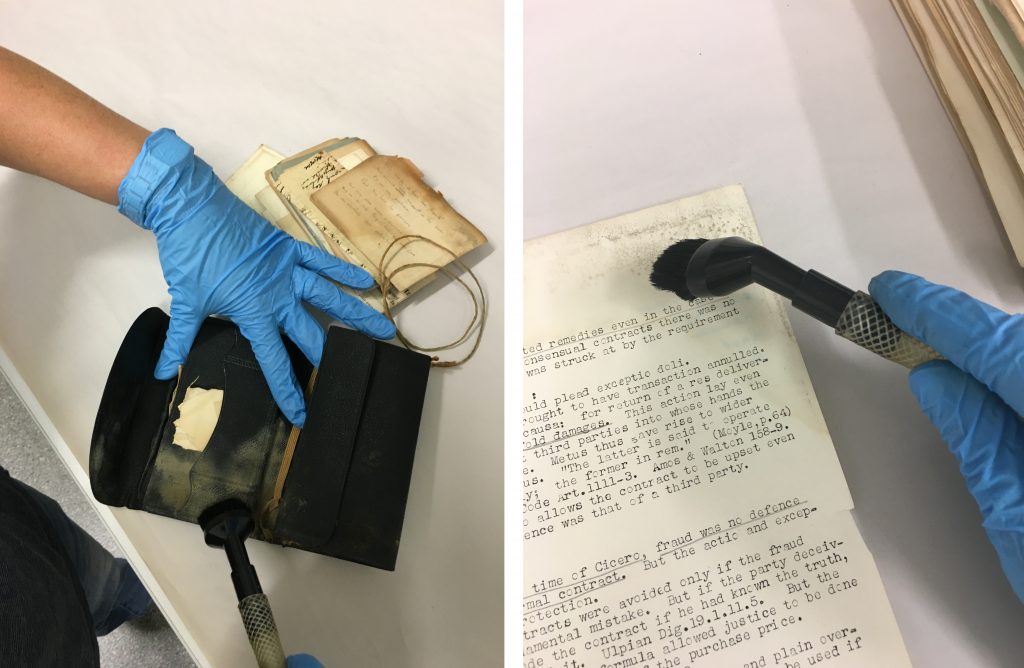
Wet and/or mouldy items can also be frozen to prevent damage. This needs to happen within 48 hours of water exposure. Enclose in air tight plastic bags that have been well-sealed with tape and place in freezer. This allows more time to seek conservation advice. This works well for small quantities of books, documents and photographs. Consider using a commercial service (such as Steamatic Pty Ltd) for freezing large collections.
Photographs should be laid flat (image side up) on paper towel or clean cloth towels. They may curl upon drying. Once dry, gently place in a clean container and seek conservation advice on appropriate storage techniques. If they have stuck together, do not try to pull them apart. Again, a conservator can provide further guidance.
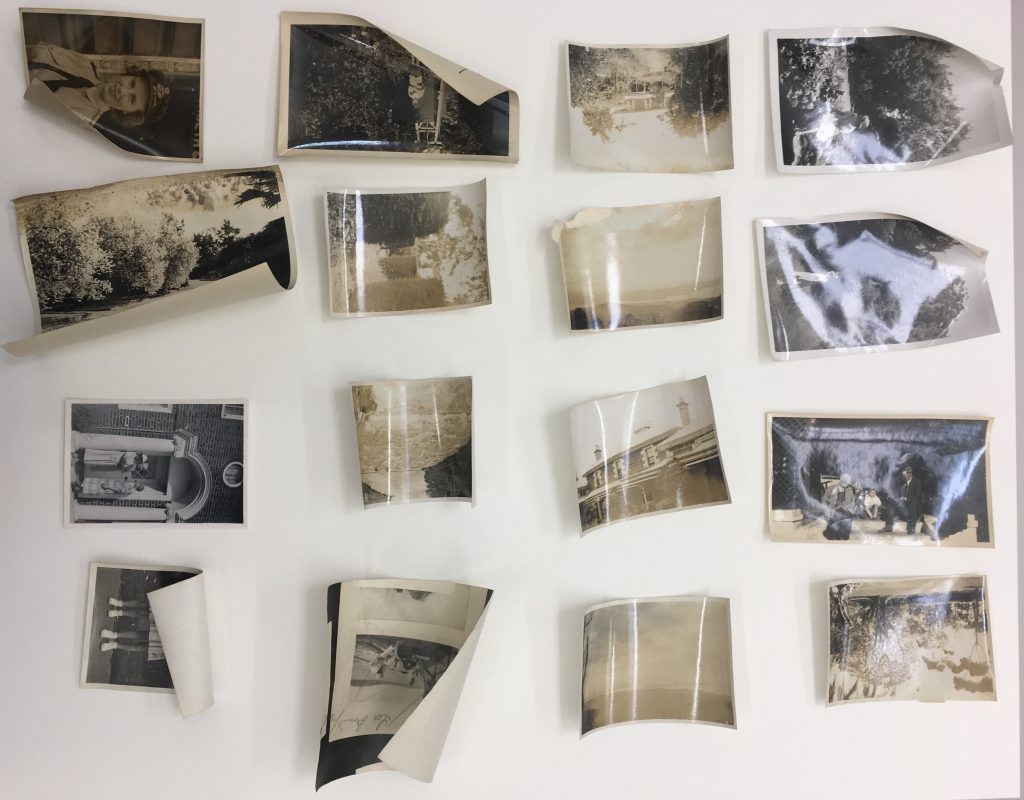
Wet textiles can be particularly susceptible to damage and must be treated with great care. Lay flat on a towel or sheet to dry. Do not wring out. Instead use a towel and a gentle pressing action to remove excess moisture. If the item is stained, do not attempt to wash. Seek conservation advice for salvage treatments.
Wet ceramics, metals and wood are vulnerable while they remain wet. Leave to dry in a clean location, away from direct heat. Wooden items need to be dried slowly to prevent cracking or warping. Monitor metals for rust. Always wear gloves and ensure safe, minimal handling.
In summary
This is a simple guide only. Please seek conservation advice if you are uncertain of any treatments. There are many organisations that can offer advice and assistance. State cultural institutions and specialist remedial services can provide further guidance and there are a number of guides and manuals available online (see links below).
Try not to panic or rush. Most items (apart from wet material) can wait until you’re ready to start the salvage process.
You might not be able to salvage everything after a fire. However careful forward planning can make all the difference. By simply gathering up some materials and equipment and prioritising salvage treatments, you may be surprised at the survival rate of your personal treasures.
Please remember that it is your safety and the safety of friends and family that is paramount.

Equipment list:
- masks
- eye protection
- nitrile gloves
- apron
- paper towel
- old sheets/towels
- soft brushes (various sizes)
- notepad and pencil
- plastic bags (various sizes)
- tape
- smoke sponge (also known as dry cleaning sponge or chemical sponge)
- sturdy plastic tubs
Further information:
Visit the Australian Institute for the Conservation of Cultural Materials website for a list of professional conservation services in your area:
Visit Blue Shield Australia for a range of useful online guides and resources from various other Australian cultural institutions and organisations:

